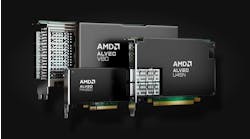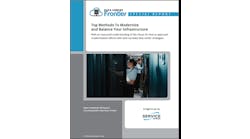Preparing Data Center Services to Meet Changing Needs
As the data center industry shifts from air cooling to liquid cooling, data center managers need to reevaluate how they think about maximizing lifespan of their cooling systems and reducing total cost of ownership. Liquid cooling can help improve total cost of ownership for data center operators while allowing them to support next-generation AI technology, but only if it installed and maintained correctly.
In legacy air-cooling systems, it is critical for data center managers to manage air flow and inlet temperatures to meet the needs of the chips being cooled. However, in these applications, the cooling is tied to the entire room, so individual systems do not have as large of a direct impact on cooling performance. In liquid cooling applications, compute power is directly tied to the performance of the cooling system because the cooling loop runs all the way to the chip. If cooling goes down, even momentarily, it will disrupt data center operations and damage equipment. The time scales for overheating, equipment shutdown and catastrophic failures are often less than 30 seconds. This requires a very purpose-optimized and solution-driven approach to installing and maintaining cooling systems.
Installation and Maintenance Considerations
Secondary cooling loops in data centers are the closed liquid loops that actually come into contact with IT equipment in the rack. Increasingly, the data center industry is asking equipment providers to offer the ability to stand up cooling solutions from the coolant distribution unit (CDU) all the way into the rack. Once installed and turned on, cooling does not turn off—this means that secondary cooling loop equipment providers have a lot of responsibility to make sure that equipment is set up for success.
Over the course of a cooling system’s lifecycle, data center cooling systems require several critical services. This starts with correct installation; if cooling systems are not set up with the correct equipment to begin with, it is likely to create problems down the line. Once systems are installed and running, the focus of data center managers needs to turn to preventative maintenance. It can be significantly easier and cheaper to prevent problems through a thoughtful and well-designed maintenance program than to deal with the impacts of significant repairs.
However, even well-maintained systems will sometimes experience the need for repair. When doing repairs, data center managers need to make sure to work with service providers that understand the systems and can conduct repairs in a way that maximizes uptime and reliability. Ideally, systems would also have built-in redundancies and hot-swappable components that make repairs possible without disrupting data center operations.
Fluid Management and Water Treatment
One side of maintenance that is worth calling out specifically is fluid management. The CDU is the heart of the data center system, and following this analogy, the fluid is the blood. If the fluids inside cooling lines are not properly treated and filtered it can lead to bio growth, corrosion, fouling of cold plates, debris in cooling loops and, ultimately, damage to equipment. With millions of dollars of IT sitting inside data center racks, there is little room for error. It is critical that data center personnel either understand or partner with someone who understands how to manage water quality.
Water quality management extends from installation through the life of cooling equipment. It often includes regular filter cleaning and changes, flushing secondary pipework during installation or before delivery to prevent bio growth before the system is switched on, periodic liquid testing, and remediation to ensure liquid quality. It is important for data center managers to select cooling equipment that is easy to service and have a plan in place for maintaining water quality before the equipment is installed.
Preparing for the Future
Liquid cooling systems present exciting opportunities for data center managers to support next-generation IT and enable the future of AI computing. However, something as small as a poorly-installed filter or dirty water line can have an outsized negative impact on data center operations. When pursuing liquid cooling installations, data centers need to plan for regular maintenance to make sure they are getting the most out of their equipment.

Chris Hillyer
Chris Hillyer is the global Director of Professional Services for the nVent Data Solutions business. He has worked in the IT, data center, and communications industry for 32 years understanding and leading industry change at some of the world’s largest compute installations.
Prior to joining nVent as a Senior Solution Architect, Chris spent a combined 10 years at BlackBox Networks, UC Davis Healthcare, and Amazon Web Services (AWS) as a Global Data Center Design Engineer, responsible for data center design and engineering for Western US and APAC regions.
Chris holds certifications with BICSI RITP, BICSI Outside Plant Design, CNet CDCMP, and is a FOA Certified Fiber Optic Specialist. Chris has 7 patents issued or under application, and has authored two articles for ITC Journal. In the past Chris has owned responsibility for the BICSI TDMM and RITP, and was a Master Trainer for the VDV training program in Northern California where he worked to develop the first regional training program for IBEW/NECA.






